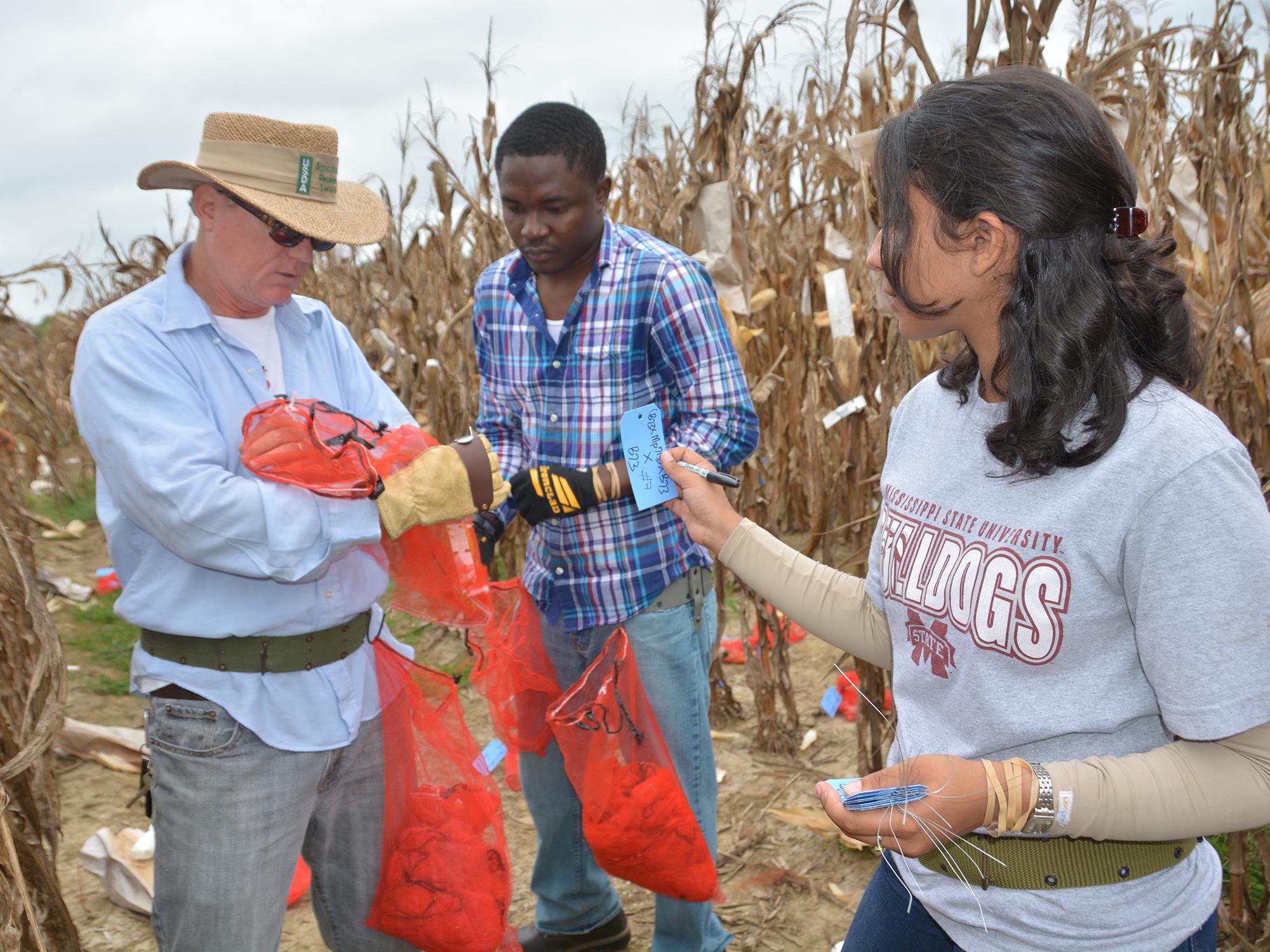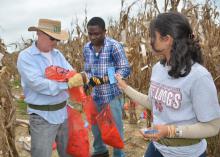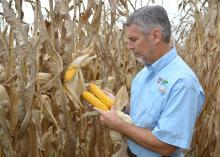Information Possibly Outdated
The information presented on this page was originally released on September 12, 2014. It may not be outdated, but please search our site for more current information. If you plan to quote or reference this information in a publication, please check with the Extension specialist or author before proceeding.
Dryland corn closes gap on irrigated acres
MISSISSIPPI STATE -- Ample rains helped dryland corn close the yield gap between irrigated and nonirrigated fields, leading to what should be a new state yield record.
The U.S. Department of Agriculture released a crop production report on Sept. 11 indicating strong yield expectations.
“This year’s state record yield is forecast at 180 bushels per acre, 4 bushels per acre higher than a year ago and 2 bushels per acre higher than last month’s estimate,” said Brian Williams, agricultural economist with the Mississippi State University Extension Service.
“Recently, market movement has been supply driven,” Williams said. “When prices were so high two years ago, much of the country was in a drought, and there were fears that production would not keep up with demand.”
Last year’s record crop changed all that.
“Based on current expectations, we should break last year’s record production again, further driving down prices,” he said.
For comparison, Williams said Greenville cash corn was recently trading at $3.51 per bushel, compared with $4.53 a year ago and $7.22 two years ago. Planting decisions for next year, like most years, are based primarily on market prices.
Erick Larson, state Extension corn specialist, said rains absolutely lowered irrigation costs this year.
“Corn prices are not as strong as in years past, so lower production costs are a real bonus for growers,” Larson said. “There were some isolated cases where rain saturated soils and cloudy days in June stunted plants, restricted development and hurt productivity, but state yields will still be very good.”
Larson said Mississippi rarely has a year without drought stress, but in 2014, dry conditions were very limited, primarily in the northeastern counties. He said grain quality has been exceptional, and test weights have been extremely high.
“Corn harvest has been going well, and good yields are consistent from field to field,” he said. “The production gap between dryland and irrigated corn is closer than normal because rain was more regular. We will see 200 bushels per acre in some dryland fields.”
Larson said recent rains have not hurt corn approaching harvest.
“The harvest season has actually been the driest part of the season thus far. Corn is physically equipped to handle rain much better than soybeans or cotton when mature. Corn dries out quickly and does not take on a lot of moisture even during excessive rains,” he said. “Of course, dry weather allows for a faster, more efficient harvest.
“High winds are the biggest threats to the crop at this point because they can cause the tall plants to lodge, complicating harvest and potentially reducing yields,” he said.
Leflore County Extension coordinator Andy Braswell said trucks are lined up at the grain elevators as the harvest progresses rapidly.
“I’m hearing about good yields in irrigated and nonirrigated fields,” Braswell said. “Growers are also telling me how pleased they are with the use of moisture meters to help determine irrigation needs. These meters have really helped save them money this year.”
Braswell said growers are becoming more conservative with water use each year.





